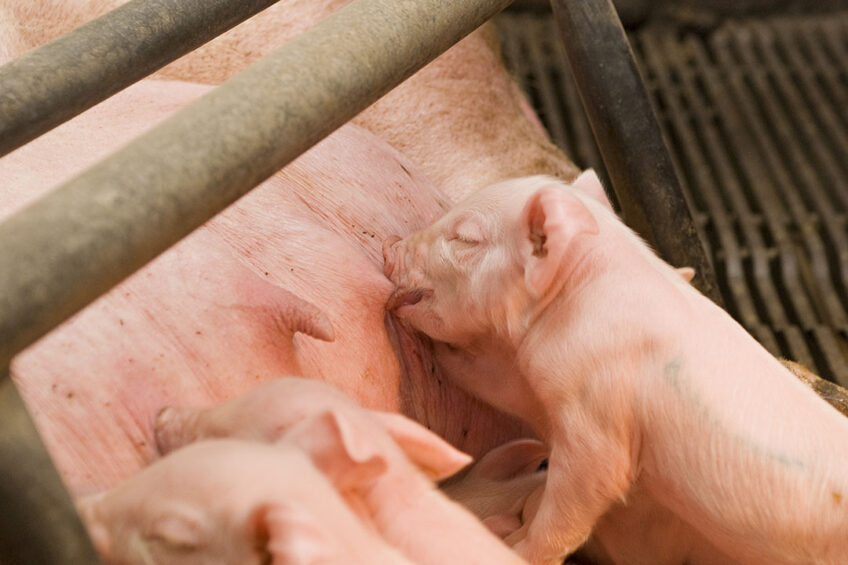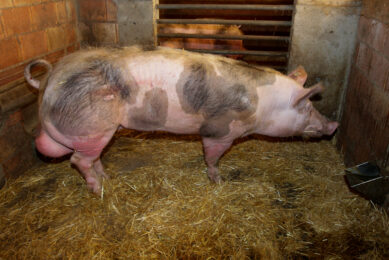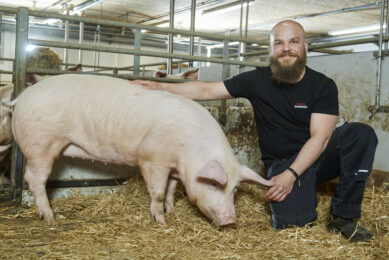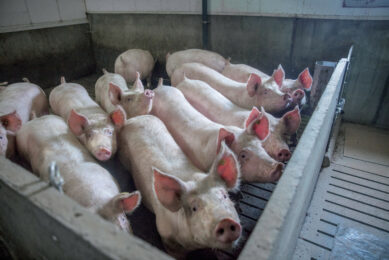Precision breeding improves piglet survival rate

One of the big challenges in pig production today is getting piglets healthily through lactation. One way to help piglets get on their way is through “precision breeding”. What exactly does that entail?
A decrease in piglet survival from birth to weaning is accompanied by substantial economic loss and health and welfare concerns for the swine industry. Thus, it is essential to improve the piglet survival rate. Factors such as environmental conditions, health, temperature, nutrition, social interaction and management impact piglet survival rate.
Piglet survival is complex
Furthermore, piglet survival is complex, being controlled by direct maternal genetic effects and piglet genes. Maternal genes encode traits including uterine capacity, placental efficiency, the number of teats, colostrum production, farrowing duration, maternal behaviours and mothering ability of the sow nursing the piglet. In addition, factors such as litter size, birth weight, variation in litter size and birth weight, gestation length and congenital defects affect piglet survival rate.
Precision breeding is a promising way to improve piglet survival rate.
What is precision breeding?
Precision breeding is the application of modern biotechnology such as gene editing in animal breeding. Gene editing uses specialised enzymes to cut DNA at specific points along the DNA sequence to add, remove or replace DNA in a precise manner at these points. Precision breeding covers gene alterations equivalent to the changes that may occur naturally or through traditional breeding methods. The main advantage of precision breeding is introducing desirable traits in livestock without the need for years of cross-breeding.
Direct and maternal genetic effects
To develop selection schemes for improved piglet survival rate, it is necessary to consider data at individual level, including survival at birth, survival during the nursing period and individual piglet birth weight. In addition, data at the sow level is important, consisting of the number of teats, colostrum production, farrowing duration and mothering ability; and data at litter level, including survival rates, average birth weight and litter size.
To identify the optimum selection strategy for piglet survival, the negative associations between the direct and maternal genetic effects of survival traits must be considered
Genetic effects might be correlated
Various research studies suggest that all these traits have significant heritability and therefore can be improved by breeding. However, these genetic effects might be correlated, affected by other non-genetic factors and unfavourably associated with other reproduction traits such as litter size, which makes the development of optimal breeding strategies a challenge. Therefore, to identify the optimum selection strategy for piglet survival, the negative associations between the direct and maternal genetic effects of survival traits must be considered.
Breeding value of survival traits
The breeding value of an animal is defined as its genetic merit for each trait. While it is not feasible to determine an animal’s true breeding value, it is possible to estimate it. Therefore, these estimates of an animal’s true breeding value are called estimated breeding values. Estimated breeding values are expressed as the difference between an individual animal’s genetics and the genetic base to which the animal is compared.
Developing a genetic statistical model
The next step in precision breeding is to develop a genetic statistical model based on genetic parameters of piglet survival, estimated breeding values of survival traits and the selection response from a selection scheme. At piglet level, observations of survival are binary (alive or dead), which are more appropriately analysed using a threshold model.
Direct and maternal selection responses of piglet survival and birth weight at the piglet level are analysed using a Bayesian threshold-linear model. In addition, a linear model is particularly appropriate for the analysis of the direct selection responses of survival, reproduction and birth weight traits at the sow level.
Selection for piglet survival
A research study by Tuan Q. Nguyen from the Department of Agriculture, Horticulture and Engineering Sciences, Roslin Institute in Edinburgh, Scotland in 2023 showed that selection for piglet survival was highly successful, with significant improvement in the target trait, piglet survival during the nursing period, especially when selecting for the maternal genetic effect.
In addition, various favourable correlated responses such as improvement in piglet survival at birth and piglet birth weight were observed. Furthermore, one of the most notable results of this study was that selection for direct genetic effect and selection for both direct and maternal genetic effects could magnify the negative association between direct and maternal genetic effects in piglet survival and thus reduced its overall genetic improvement.
Moreover, the study results suggested that piglet birth weight and sow litter size uniformity can be achieved by selection to reduce their variations.
Due to canalised selection, the animals in the population have a more or less strong tendency to develop into adults of the favoured type
Using canalised selection
The same research study also explored the opportunity of using canalised selection to enhance the uniformity of litter size and birth weight to improve piglet survival. Canalised selection is described as a type of natural selection that tends to remove those alleles which render the developing animal sensitive to the potentially disturbing effects of environmental stresses and builds up genotypes producing the optimum phenotype even under suboptimal or unusual environmental situations.
Due to canalised selection, the animals in the population have a more or less strong tendency to develop into adults of the favoured type. The results of this study showed that selecting for lowering environmental standard deviation of litter size led to favourable responses, for example, increased litter size and piglet survival rate per litter during the nursing period and decreased standard deviation of piglet birth weight within the litter, while having no effect on average piglet birth weight per litter.
Since selecting for increased piglet survival rate per litter during the nursing period, for reduced environmental standard deviation of litter size and for reduced standard deviation of piglet birth weight improved survival during the nursing period, a weighted combination of these traits could be the optimal solution to improve piglet survival without reducing litter size.
Concluding remarks
Precision breeding is a useful breeding methodology that contributes to introducing desirable traits in livestock without the need for years of cross-breeding. In addition, precision breeding for enhanced survival rate improves piglet health and welfare, while preventing financial losses and ensuring affordable solutions for swine farmers. Both direct and maternal genetic effects are involved in piglet survival rate; thus it is necessary to consider data at individual level, sow level and litter level to develop selection schemes for improved piglet survival rate.











